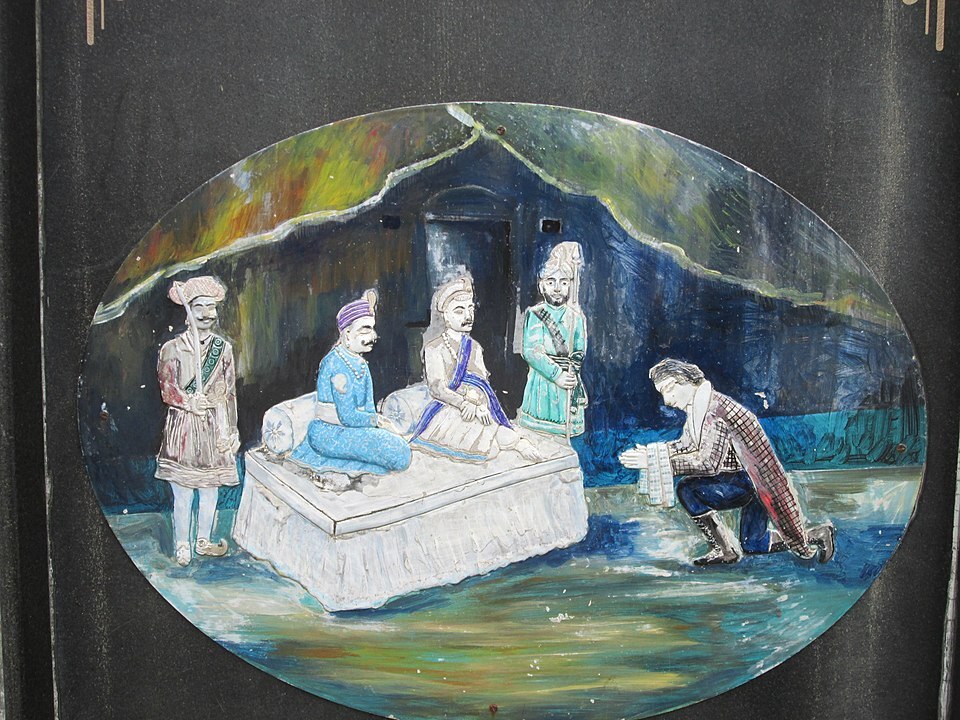The First Anglo-Maratha War lasted from 1775 to 1782 was conflict between the British East India Company and Maratha Empire in India. This was the first of the three Anglo-Maratha Wars. The war started with the Treaty of Surat and concluded with the Treaty of Salbai. The battle took place between the Surat and Pune kingdoms, resulting in a British defeat and the restoration of the pre-war status quo for both sides.
Background
After the death of Madhavrao Peshwa, his brother Narayanrao became peshwa of the Maratha Empire. But it did not lasted long. Narayanrao was murdered by the palace guard conspiracy of his uncle Raghunathrao.
Narayanrao’s wife Gangabai gave birth to a posthumous son Sawai Madhavrao. In terms, he was the legal hier of the throne.
Twelve Maratha chiefs, known as the Baarbhai and led by Nana Phadnavis, directed an effort to install the infant as the new Peshwa and to rule in his name as regents.
Raghunathrao was unwilling to give up his position. He sought help from the British at Bombay and signed the Treaty of Surat on 6th of March 1775. According to the treaty, Raghunathrao ceded the territories of Salsette and Bassein (Vasai) to the British, along with part of the revenues from Surat and Bharuch districts. In return, the British promised to provide Raghunathrao with 2,500 soldiers.
Initial stage and Treaty of Purandar (1775–1776)
On 15 March 1775, Colonel Keating led British troops from Surat to Pune, but their progress was impeded by Haripant Phadke at Adas, resulting in their defeat on 18 May 1775. Casualties for Keating’s force, accompanied by Raghunathrao, included 96 killed, while the Marathas suffered 150 casualties in the Battle of Adas in Gujarat.
Warren Hastings believed that taking direct action against Pune would be detrimental. Thus, the Supreme Council of Bengal condemned the Treaty of Surat, and Colonel Upton was sent to Pune to nullify it and negotiate a new treaty with the regency. Upton and the ministers of Pune signed the Treaty of Purandar on 1 March 1776, which annulled the Treaty of Surat, pensioned Raghunath Rao, and abandoned his cause. However, the British retained the revenues of Salsette and Broach districts.
However, the Bombay government disapproved of this new agreement and provided shelter to Raghunathrao. In 1777, Nana Phadnavis breached his treaty with the Calcutta Council by allowing the French to use a port on the West coast, prompting the English to respond by dispatching troops towards Pune.
Battle of Wadgaon
In 1776, a treaty between France and the Poona Government led the Bombay Government to plan an invasion to restore Raghoba to power. They dispatched a force led by Col. Egerton, which reached Khopoli and traveled through the Western Ghats to Karla, despite Maratha attacks. However, the British were forced to retreat to Wadgaon and surrender, signing the Treaty of Wadgaon on 16 January 1779, resulting in a Maratha victory.
Although reinforcements under Colonel Thomas Wyndham Goddard arrived too late to save the defeated Bombay force, Goddard was ordered by the British Governor-General Warren Hastings to secure British interests in the area.
With 6,000 troops, Goddard successfully captured Ahmedabad on 15 February 1779, despite facing a garrison of 6,000 Arab and Sindhi infantry and 2,000 horses, with losses totaling 108, including two British soldiers. Later, in 1780, Goddard captured Bassein, and another Bengal detachment under Captain Popham, with the assistance of the Rana of Gohad, took control of Gwalior on 4 August 1780 before Mahadji Scindia could prepare for battle.
Skirmishes occurred between Mahadji Scindia and General Goddard in Gujarat, but without a clear winner. In response, Hastings sent yet another force, commanded by Major Camac, to harass Mahadji Shinde.
Central India and the Deccan
Goddard proceeded towards Pune after taking control of Bassein, but was defeated by Parshurambha, Haripant Phadke, and Tukoji Holkar in the Battle of Bhor Ghat in April 1781.
In central India, Mahadji stationed himself in Malwa to challenge Camac. Initially, Mahadji had the upper hand and Camac’s British forces were harassed and diminished, leading to a retreat to Hadur.
However, in February 1781, the British managed to defeat Shinde and take control of Sipri. Despite this, Shinde’s larger army shadowed their every move and cut off their supplies, until the British made a desperate night raid in late March, capturing supplies, guns, and even elephants.
Shinde’s military threat to the British was then greatly reduced. The contest was now evenly balanced. While Mahadji won a significant victory over Camac at Sironj, the British avenged their loss in the Battle of Durdah on March 24, 1781.
Colonel Murre arrived with fresh forces in April 1781 to assist Popham and Camac. After his defeat at Sipri, Mahadji Shinde became alarmed and proposed a new treaty between the Peshwas and the British, which came to be known as the “Treaty of Salbai.”
Treaty of Salbai
The Treaty of Salbai, signed on May 17th, 1782, was ratified by both Hastings in June 1782 and Nana Phadnavis in February 1783. It effectively concluded the First Anglo-Maratha War by reinstating the previous state of affairs and paving the way for two decades of peaceful coexistence between the two sides.
FAQs
There was no clear cut winner or loser of the First Anglo-Maratha war. But we can say Maratha were able to baffle the British. Both then agreed to the Treaty of Salbai.
The Treaty of Surat between the Raghunathrao and British Company in Bombay caused the tension and was the reason behind the Anglo-Maratha War.
It was happened around different places. But the significant of them were at Wadgoan, Ahmedabad, Gwalior, Pune.
The main cause of First Anglo-Maratha was was the Treaty of Surat. And it ended with the Treaty of Salbai.
The Treaty of Salbai ended the First Anglo-Maratha War.
The First Anglo-Maratha war fought between the Maratha Empire and The British East India Company.


3 thoughts on “First Anglo Maratha War – Causes and FAQs”